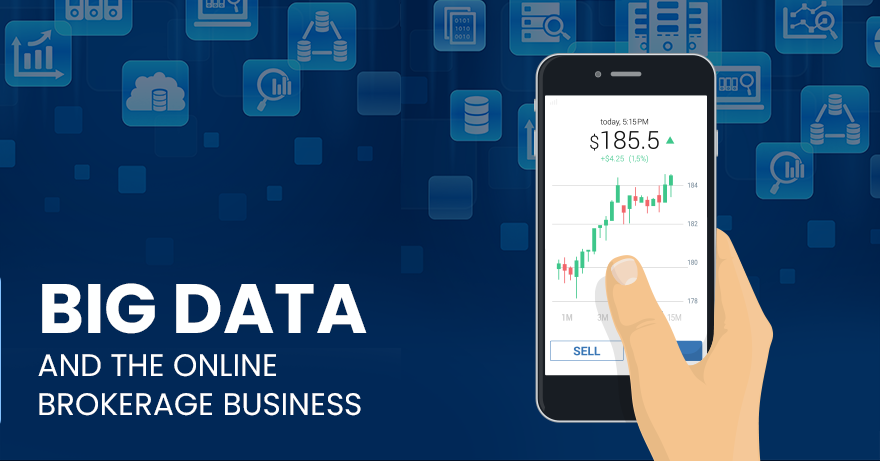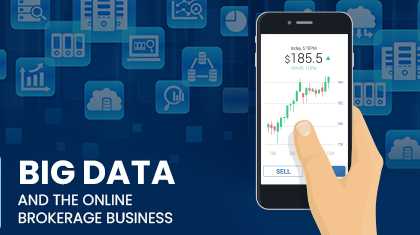
TipRanks Stock Data, Coming to a Panda Platform Near You!
December 30, 2021
Non-Fungi-What? A No Nonsense NFT Primer
February 10, 2022
Big data is a buzzword that tends to get thrown around a lot, but what exactly does it mean? The term refers to a method of statistical analysis using datasets that are far too large or complex to analyse using traditional methods. Thanks to the Internet, we now create unbelievable amounts of data just by going about our daily business.
If you consider the amount of data you create just by interacting with your smartphone throughout the day, and then extrapolate that out to every other smartphone and computer user on the planet, you start to get an indication of just how much new data we create.
And it’s not just our phones that contribute to the deluge. Consider all the other connected devices we interact with on a daily basis. Whether it be touchless payments at the local deli, the numerous traffic cameras we drive past every day, or the travel cards we swipe to use public transport. Our digital fingerprints are left everywhere we go.
Predictive Analysis
In the past, that data was too plentiful to store and manage, let alone analyse in any meaningful way. Big data refers to a collection of techniques for storing, cataloguing and analysing this abundance of data in a way that it is able to identify new correlations and generate actionable insights from them. This is just as true of the way we analyse weather systems today, or genomics and other medical data, as it is of the behavioural traces we leave as we go about our day.
The most common usage of the term big data is in the fields of predictive behavioural analysis, where the millions of digital interactions we have online are useful for predicting how we are most likely to behave in certain scenarios. This is obviously most useful in online marketing as it attempts to hone a series of techniques for gently nudging users who are deemed most likely to convert, towards a certain product or service.
The adverts that seem to follow you around when you only mentioned to a friend in passing that you were thinking of buying a new pair of boots or a toaster. The manner in which your device wants to send usage data back to some central server in order to help make what you see when browsing online more “relevant” to you. These are all offshoots of the same fundamental idea, and it goes as follows:
The more data you have, the more behaviours (which previously would have seemed random) can be identified as part of some broader pattern.
We like to think of ourselves as beautiful and unique snowflakes, however, big data analysis has revealed to us that when you analyse the habits of enough users you observe patterns that would not have been visible to previous generations of statisticians.
Big Data for FX/CFD Brokers
It’s actually surprising to us here at Panda that the online trading industry didn’t pick up on this trend sooner. Online trading is an exclusively digital business. Users find a brokerage online. They register, get verified and fund their accounts online. Then they use a digital platform to trade digital securities exclusively online.
Every single action a user takes on their journey, from the very first time they clicked on a banner or text advert -or the pages they navigated to before registering, getting verified and funding their accounts- to every communication they ever have with customer support. Everything they ever do on the trading platform. Every position, every stop loss. All this is informational gold dust that most brokers are letting slip away through their fingers. This data is there to make businesses smarter. So why don’t more brokers take advantage of any of it?
3 Big Data Obstacles for Online FX/CFD brokers
1. First mover disadvantage
Normally you hear about first mover advantage rather than disadvantage, but being the first to the party can also come with its disadvantages. Our industry provided some of the very first online retail trading markets. As such, many brokers built their core infrastructures 10-20 years ago. Some brokers have even been around longer than “Googling” has been a thing!
2. Ecosystem fragmentation
As a result of how early this industry got started we’ve gone through many iterations of technology. This causes many brokers to suffer from a fragmented informational ecosystem where, for instance, marketing client behaviour data is not available to sales/retention or back office, or the CRM data isn’t able to integrate all the various initiatives taking place in different departments all in one place. This means that your client data isn’t being used optimally because it’s locked up in different software environments that don’t talk to each other.
3. If it ain’t broke…
This third point is probably the easiest of the three to correct because it’s a mindset rather than a technological obstacle. Our industry, being a first mover, has historically been so lucrative, with leads so easy to convert, that the primary business model has been to bring new leads in at all costs and just churn through them (knowing that more fresh ones are coming in every day). This works fine when an industry is in its infancy. But when it comes of age like online trading has today, with stricter regulation, much more competition, and a savvier client base, efficiency is key if you want to remain competitive.
A Fintech Provider’s Perspective
Panda Trading Systems has been providing technological solutions for the trading industry’s major brokerage houses for almost two decades now. In that time, we have seen several iterations of technology come and go and have also observed the industry pivoting to incorporate new assets, business models, and regulatory practises. Over the years, we have repeatedly come up against the same problem over and over again. Fragmented software ecosystems that cannot effectively communicate or consolidate data between them. This leads to brokerages having to lean on their staff to provide manual workarounds for what should have been a simple software solution.
Part of the reason Panda is so experienced as a custom development house is that so often we’ve had to go in and create customised solutions that work around existing brokerage infrastructure in order to achieve the desired result. We originally became experts in getting brokerage systems to do what they’re supposed to do, even when having to work with multiple disparate and (in many cases) outdated software systems.
The knowledge we have gained in doing the above has informed the development of Panda’s own products, to the point where we now have a suite of software solutions that address every single brokerage need. In fact, we pioneered the industry’s most comprehensive, accessible, and quick to launch “Broker in a Box” solution. A complete turnkey brokerage product that enables any business to set up their own trading business in record time.
The Bottom Line
Most brokers find it hard to apply big data techniques to their client data because they’re simply not efficient enough. Why? Because they use different systems for different business requirements and those systems can’t easily be made to communicate with each other. Big data analysis doesn’t work well with disparate, siloed systems. It requires connectivity and interoperability.
In this way, you can have a consolidated view of each individual client that includes the path they followed through your online materials, the communications they’ve had with your customer support, the funding interactions they’ve had with your accounting department, the assets they trade, the way their portfolio performs, and much more.
Big data analysis requires the combination of all of these complex interactions in order to be able to discern useful patterns. What we’re seeing is that brokers have the data, it’s just stuck in different places and can’t be brought together easily.
To find out more about how Panda’s CRM consolidates all brokerage data into a single business intelligence platform accessible to all team members, please get in touch with one of our success managers for a full tour.
For free consultation
Request a Call
